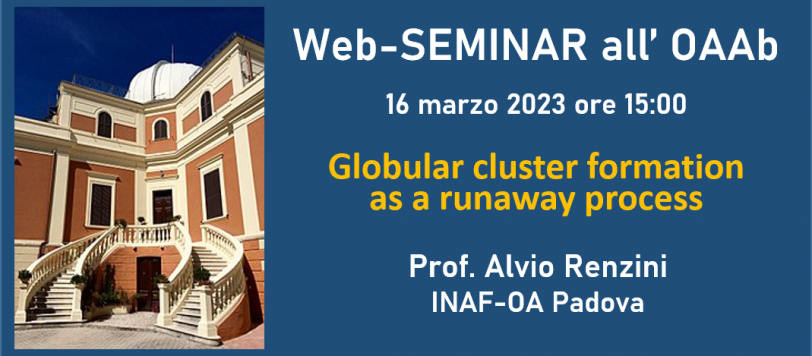Categories: News Seminari
Tags: Ammassi Globulari Evoluzione Stellare Globular clusters Popolazioni Stellari
Posted by: Staff
Date: Mar 10, 2023
Globular cluster formation as a runaway process

Giovedì 16 marzo alle ore 15:00, il Prof. Alvio Renzini dell’INAF-Osservatorio Astronomico di Padova terrà il web-seminar dal titolo “Globular cluster formation as a runaway process“.
Abstract
The formation of globular clusters, with their multiple stellar populations, remains an intriguing puzzle in astrophysics. After summarizing state-of-the-art relevant observations, the existing candidates for producing the chemical patterns typical of multiple populations are reviewed, then selecting massive interactive binaries as the most suitable among them. Still, to avoid supernova contamination, one is further driven to endorse the notion that above a critical mass, stars fail to produce supernova events, but rather eventually sink into black holes without ejecting much energy and heavy metals. This assumption has the attractive implication of suppressing star formation feedback for some 5–10 million years, in practice leading to runaway star formation, analog to overcooling that in absence of feedback would have turned most baryons into stars in the early Universe. Under such conditions, multiple episodes of star formation, incorporating binary star ejecta from previous episodes, appear to be unavoidable, thus accounting for the ubiquity of the multiple population phenomenon in globular clusters.






Comments are closed.